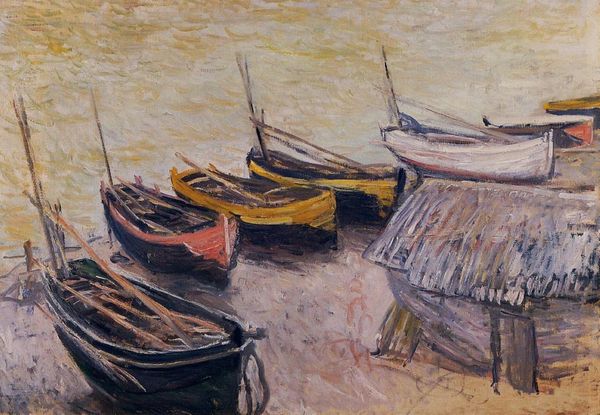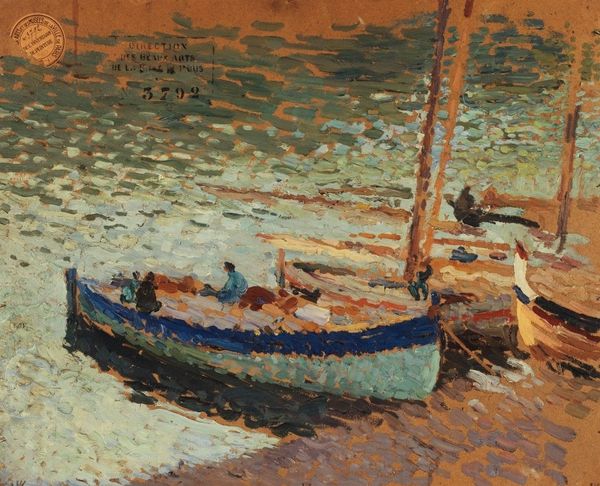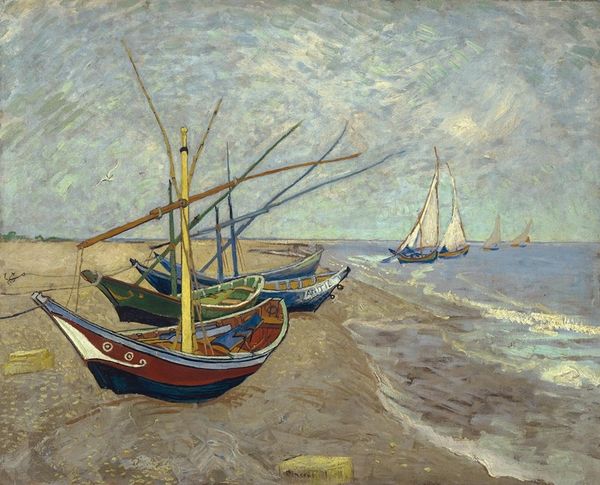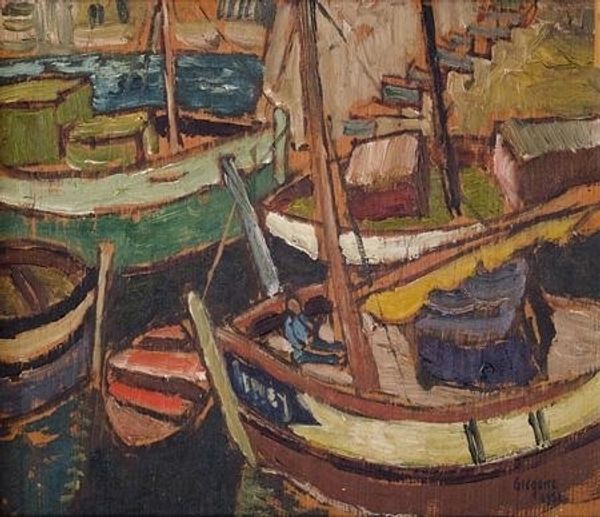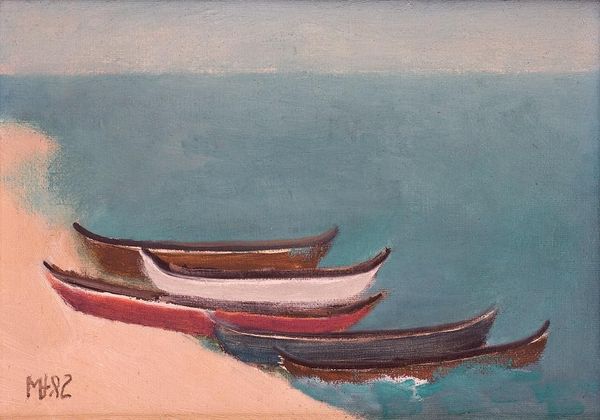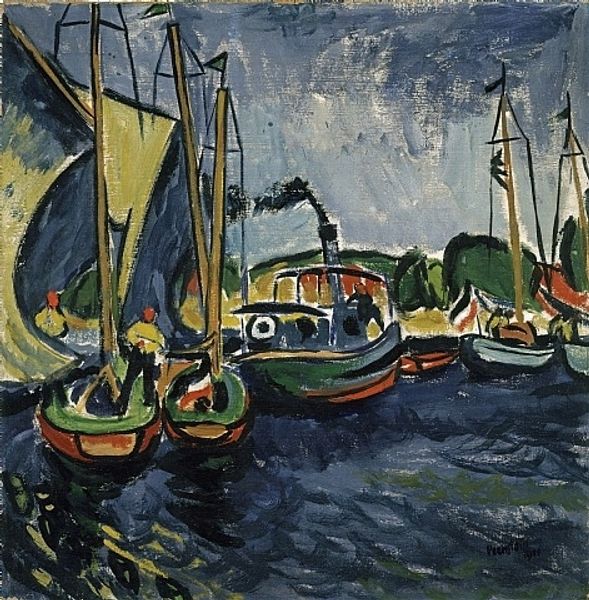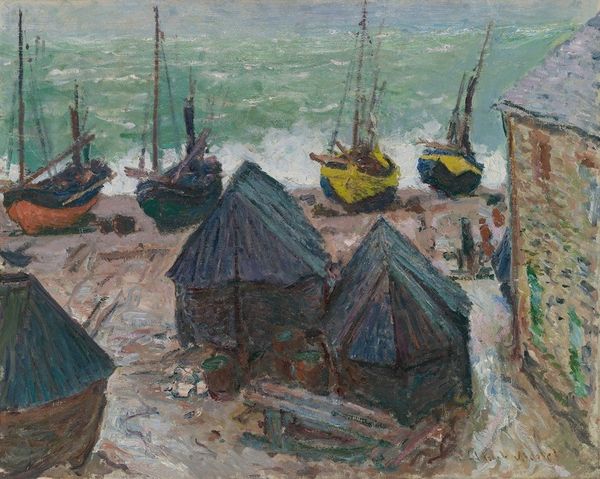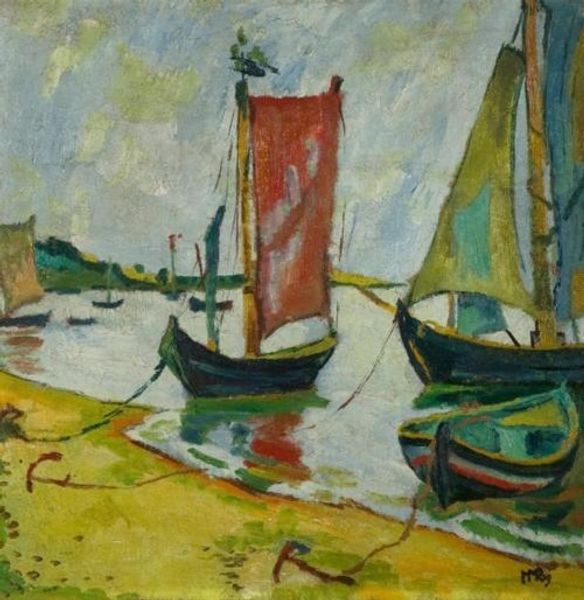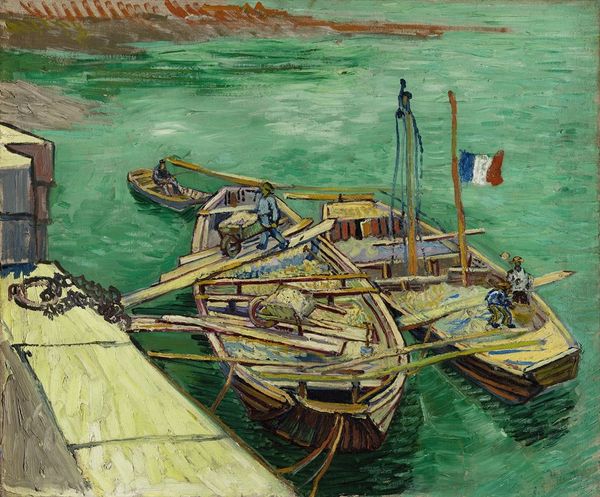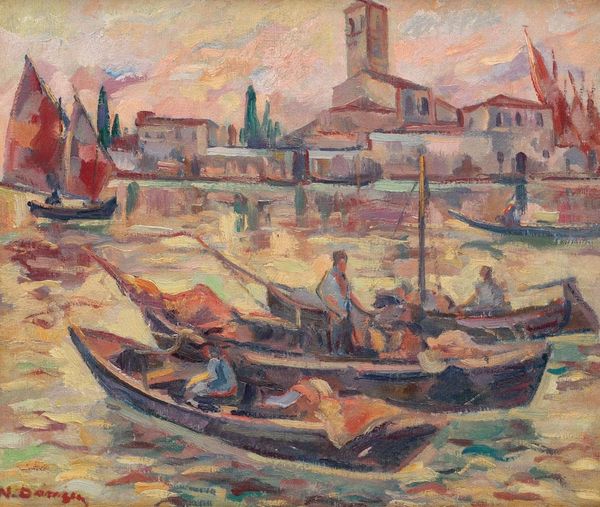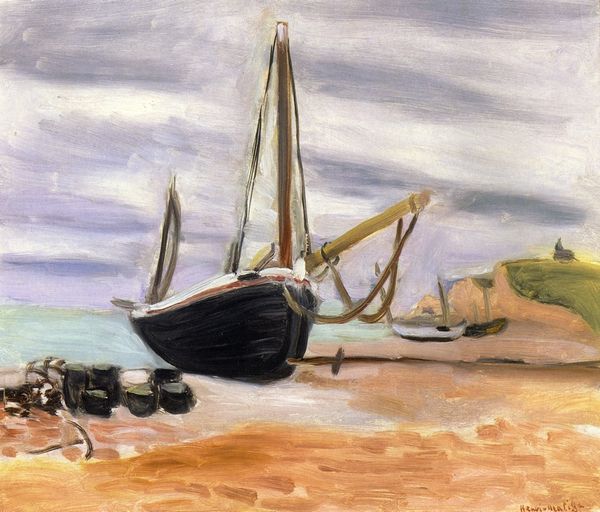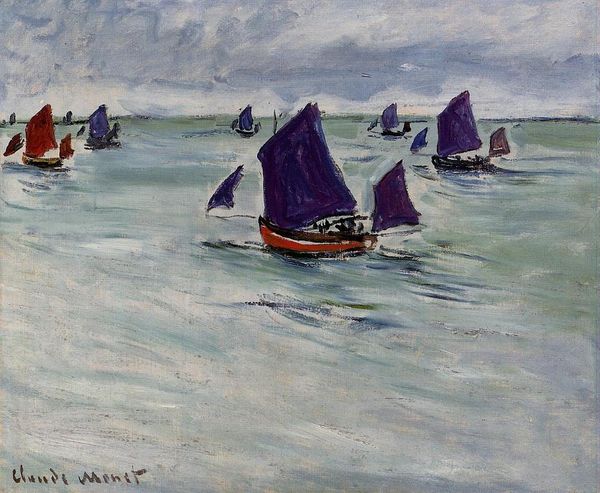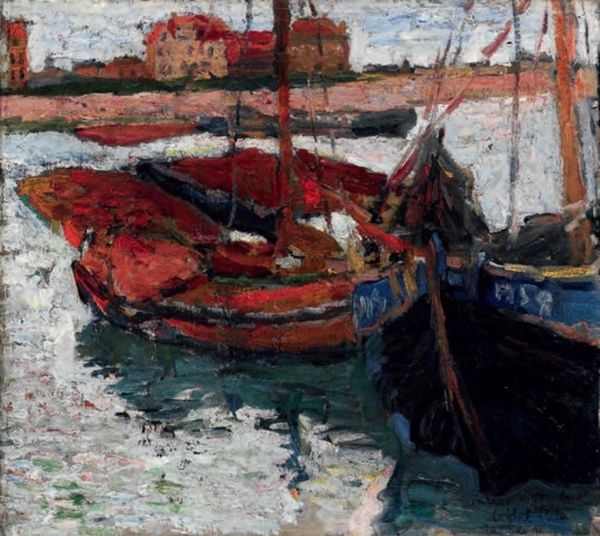
painting, plein-air, oil-paint, impasto
#
painting
#
impressionism
#
plein-air
#
oil-paint
#
landscape
#
impressionist landscape
#
oil painting
#
impasto
#
post-impressionism
Copyright: Public Domain: Artvee
Curator: This is “Three Fishing Boats,” attributed to Claude Monet, painted with oil on canvas. The exact date remains unspecified, allowing for diverse interpretations concerning its context within Monet’s broader oeuvre. Editor: There's a certain tension in the composition; the impasto strokes lend a turbulence to the sea that is quite confronting, contrasting with the seeming stillness of the grounded boats. Curator: Absolutely. The materiality is crucial here. Note the distinct brushstrokes, separate and yet unified, which characterize Impressionism's capture of fleeting moments, rendering the boats not as literal representations, but as aggregates of light and color. Editor: Yet, knowing Monet's history, one can also interpret this scene through the lens of the social conditions of the time. Consider the role of maritime activities in 19th-century France, and the dependence of communities on fishing. It is, or can be argued, a depiction of labour and local industry on display. Curator: Yes, the work gestures towards that reality. Still, I find the most compelling aspect to be Monet's radical manipulation of color. Observe how the yellow boat disrupts the conventional harmony one might expect, generating visual tension. This wasn’t just observation, it's active construction. Editor: And could this be read as a commentary? Are the boats simply idle? Perhaps the turbulent seas have prevented these workers from providing to their local community and providing a vital necessity. How many lives relied on these boats heading out safely? Curator: Those interpretive possibilities add to the piece, certainly. But ultimately I come back to the arrangement itself, a fascinating study in complementary hues, of ochre, emerald and gold that are themselves expressive of something very important to our experience of the sea, regardless of location. Editor: Indeed. These layers of aesthetic and historical investigation create a dynamic encounter. Thanks for your thoughts. Curator: Likewise, seeing your interpretations help refocus how I view it also. Thank you.
Comments
No comments
Be the first to comment and join the conversation on the ultimate creative platform.
